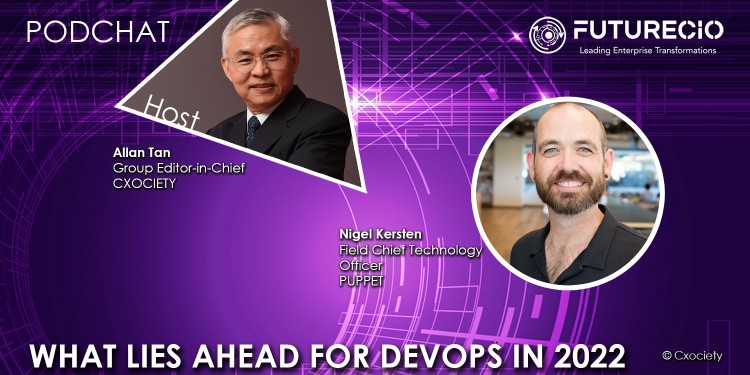As legend would have it, the original concept behind DevOps came about during a discussion between Andrew Clay and Patrick Debois in 2008. At the time they were pondering the drawbacks of Agile and were discussing an alternative.
Today DevOps is part of the computing lexicon often being brought into the discussions whenever the topic of Agility, digital transformation and staying relevant to changing business environments and consumer demands.

Al Gillen, Group VP, software development and open-source, IDC says developers and DevOps professionals continue to be in the hot seat as their organizations or their customers demand that convenient and user-friendly solutions be created and deployed at an even faster rate
"We see the industry on the edge of gaining some fascinating new tools that will help accelerate both development and deployment in the years to come, reducing at least some of the pressure to generate more applications more quickly," he opined.
FutureCIO reached out to Nigel Kersten, Field CTO at Puppet, for his take on the direction DevOps has been taking since its creation and where it is headed given the current state of markets and business operations.
How has DevOps changed since 2008?

Nigel Kersten: First, people are aware of it across our industry. When I first started evangelising a DevOps approach around 2010 to enterprises, and when we first produced the first State of DevOps Report in 2011, people genuinely had no idea what it was.
Second, we’ve seen organisations that adopted these practices early rocket ahead of their competitors in terms of being able to deliver software and respond to change more frequently, with higher levels of both security and overall quality.
Third, we’ve seen an unfortunately large group of people fundamentally misunderstand what DevOps is, and they’ve focused on automation or CI/CD pipelines and not invested in improving the dynamics between people and teams.
If you’re not working on reducing friction between parts of your organisation that need to work together to deliver software and infrastructure, you’re not really doing DevOps.
What does the report say about DevOps development in APAC in 2021/2022?
Nigel Kersten: From my experience working with Puppet across the APAC region, it’s always been a region full of early adopters in the enterprise space, particularly in financial services. This has been true with respect to both cloud adoption and automation.
One of the most significant findings from this year’s report is that the organisations that are most successful at adopting DevOps practices have largely settled on the model of having a platform team that serves multiple value-stream delivery teams via automation and self-service.
This model is one that I first started seeing in APAC financial services organisations, and then in the rest of the world. By focusing on optimising for a fast flow of software delivery and low cognitive load for your value stream teams, you can maintain regulatory compliance and other forms of governance while still moving quickly and taking advantage of new technologies.
Do you see DevOps-as-Code as having any impact on DevOps adoption in Asia?
Nigel Kersten: Infrastructure-as-code has always been a core part of the DevOps movement, as describing the state your infrastructure should be in in the form of code allows you to take advantage of modern software engineering practices such as code review and version control, but in the IT infrastructure space.
This trend is not reversing and will continue to be a major pillar of DevOps adoption in Asia.
Can low code fit into the DevOps culture?
Nigel Kersten: Low code or no code approaches require an expert to have codified their knowledge in such a way that non-experts can take advantage of it. This is the same philosophy behind a platform team approach and providing self-service interfaces to your development teams.
Everyone complains about not being able to hire enough people with the right skills yet throwing more people at the problem is not a scalable solution.
The key is to enable your experts with sufficient autonomy and direction such that the rest of the organisation can get value from their expertise, and the best way to do this is to have a strong focus on delivering value via self-service internally.
Any key lesson/takeaway to be gleaned from the Puppet report?
Nigel Kersten: First, just about everyone is using the public cloud, but most people are not taking full advantage of public cloud capabilities and have instead kept too many of their existing processes and practices. To really take advantage of the cloud you cannot merely lift and shift, you need to lift, shift, and optimise people interactions, processes, and technology.
Second, everyone is struggling with the weight of maintaining their legacy environments, even at the highest levels of DevOps evolution.
To solve this problem requires top-down focus from senior leadership, meaningful analysis of the current legacy environment, and commitment to an action plan to iteratively reduce the operational burden of legacy.
Some applications should be deprecated, others should be replaced by SaaS solutions, and others should be modernised and refactored. Understanding your legacy environment so you know which approach to take for a given application is difficult but necessary work.
Click on the PodChat player to listen to Kersten elaborate on the results of the report as well as his perspective on the ongoing development of DevOps in Asia-Pacific.





